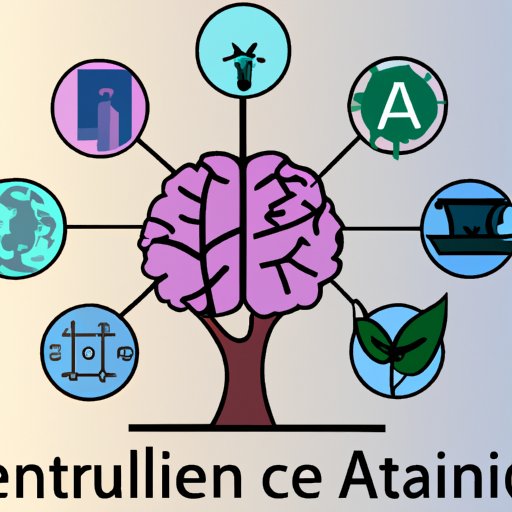Introduction
Artificial intelligence (AI) is a rapidly growing field of technology that has the potential to revolutionize the way we interact with the environment. AI is defined as the ability of machines to learn and interpret data in order to make decisions without human intervention. AI has already been applied in many different sectors, from healthcare to finance, but its potential impact on the environment is often overlooked. In this article, we will explore how AI can be used to address some of the most pressing environmental challenges.
Exploring the Impact of Artificial Intelligence on Climate Change
Climate change is one of the most pressing environmental issues facing the world today. AI has the potential to play an important role in understanding and addressing this challenge. AI-driven climate modeling can help scientists better understand the complex interactions between different elements of the climate system and make more accurate predictions about future changes. This kind of modeling could also be used to develop strategies for mitigating the impacts of climate change.
AI can also be used to predict and prevent extreme weather events. Machine learning algorithms can analyze historical data and detect patterns that may indicate an upcoming storm or other hazardous event. AI can then provide early warning systems that can alert communities and help them take action to minimize the damage.
In addition, AI can be used to reduce emissions by helping to identify energy efficiency opportunities and providing better guidance on energy use. For example, AI can monitor the energy efficiency of buildings and suggest ways to reduce consumption. AI can also help optimize transportation networks to reduce emissions from vehicles.

Assessing the Role of AI in Sustainable Development
Sustainable development is essential for ensuring that our planet remains habitable for future generations. AI can help us meet these goals by optimizing resource management and waste management practices. AI-driven systems can be used to monitor and manage water resources, helping to ensure that water is used efficiently and sustainably.
AI can also be used to improve agricultural efficiency, allowing farmers to monitor their crops and identify problems before they become too serious. AI-driven systems can be used to monitor soil conditions and provide tailored recommendations for irrigation, fertilization, and pest control.
Examining How AI Can Help Reduce Pollution
Air and water pollution are two of the biggest environmental challenges facing the world today. AI can be used to monitor air quality, detect sources of pollution, and provide guidance on how to reduce emissions. AI-driven systems can also be used to monitor water quality and detect sources of contamination, such as industrial discharges.
AI can also be used to develop innovative waste management solutions. AI-driven systems can be used to monitor waste levels and identify potential recycling and reuse opportunities. This could help reduce the amount of waste sent to landfills and help reduce greenhouse gas emissions.

Understanding the Potential of AI for Clean Energy Production
Clean energy is essential for reducing greenhouse gas emissions and slowing the effects of climate change. AI can help optimize the production of clean energy by improving the efficiency of solar panels and wind turbines. AI-driven systems can analyze data on weather conditions and adjust the output of solar panels and wind turbines accordingly.
AI can also be used to improve the efficiency of energy storage systems. AI-driven systems can analyze data on energy demand and supply and adjust the operation of storage systems accordingly.

Investigating the Use of AI to Monitor and Manage Environmental Resources
AI can also be used to monitor and manage other environmental resources, such as wildlife and forests. AI-driven systems can be used to detect and track wildlife populations, as well as identify threats to their habitats. AI can also be used to monitor land use and detect illegal activities, such as deforestation.
AI-driven systems can also be used to detect and monitor forest fires. AI-driven systems can analyze data on weather conditions and identify areas at risk of fire. These systems can then provide early warning systems that can help prevent fires from spreading.
Conclusion
This article has explored some of the ways in which AI can be used to address environmental challenges. AI can be used to improve climate modeling, reduce emissions, optimize resource management, and monitor and manage environmental resources. AI has the potential to revolutionize the way we interact with the environment and help us create a more sustainable future.
The implications of AI on the environment are significant. AI can help us better understand and address climate change, improve sustainable development, reduce pollution, increase clean energy production, and monitor and manage environmental resources. However, it is important to remember that AI is only one tool among many, and that it must be used responsibly and ethically if it is to have a positive impact on the environment.
(Note: Is this article not meeting your expectations? Do you have knowledge or insights to share? Unlock new opportunities and expand your reach by joining our authors team. Click Registration to join us and share your expertise with our readers.)
